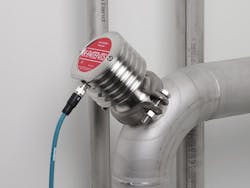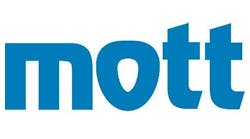Real-time measurement: The missing link in wastewater management optimization
With billions of people on the planet and an incredible amount of wastewater created by those people, safe and effective water treatment is critical to speeding up the water purification process, treating as much water as possible and ultimately keeping humans alive and the Earth thriving.As part of an industrial process, wastewater can be incredibly harmful. Unclean water poses significant health risks, accounting for 1.7 million deaths annually. In addition, many water-related diseases continue to plague developing countries where wastewater treatment is lacking. Many animals, fish and aquatic life require fresh water. When our natural environment is too polluted with wastewater, wildlife cannot survive. Beyond contamination of drinking water and harm to fish and wildlife populations, wastewater pollutants can also result in restrictions or closures for recreational water use.
While we often consider wastewater treatment and management as a matter of caring for our environment and health, it is important to consider that wastewater and side-stream treatment practices directly impact the sustainability of the food, beverage and brewing industries.
While technological advances are streamlining these processes, challenges persist for organizations managing the wastewater they create or facilities treating it before it reenters the environment.
One such challenge increasingly addressed by technological innovation is real-time monitoring. In-line monitoring systems that take instantaneous measurements — such as process refractometers — help ensure compliance with environmental regulations and cost savings by immediately identifying excessive impurities so that food and beverage industry manufacturers can quickly adjust operations without interrupting daily production.
The shortcomings of traditional water quality measurements
Across the food and beverage and brewing spaces, manufacturers use significant quantities of water and generate wastewater high in organic strength. Plants must control wastewater streams in the later stages of processing to ensure contaminants are within an acceptable range before re-entering municipal water sources. The challenge is to ensure minimal total organic carbon (TOC) levels in wastewater in compliance with local regulations. Failure to do so may result in surcharges or even hefty fines, in addition to the negative impact these pollutants can have on the environment.
Organic pollutants, whether oils and fats, alcohols and sugars, or proteins and carbohydrates, are harmful to the environment. The decomposition process consumes the oxygen contained in the water, causing oxygen depletion and negative consequences to the body of water’s ecology. As such, these organic pollutants must be measured before treatment and recycling.
Wastewater generated from production needs to be monitored to ensure compliance with environmental regulations to avoid fines and closures. Still, traditional methods for measuring water quality are time-consuming and consequently imprecise. Requirements for measuring organic chemical parameters vary, but they ultimately provide an actual measurement of influent organic load, organic removal from each process and verification that the effluent stream is within compliance.
TOC is the measurement of all organic carbons and is often used when levels of organic matter are low. A chemical oxygen demand (COD) test measures all organic carbon except certain aromatics that are not entirely oxidized in the reaction. TOC and COD are the most common parameters used for water quality, yet achieving efficient ongoing operations remains challenging because traditional testing methods are offline and time-consuming, rendering them unsuitable for real-time control. While TOC can be measured online via conductivity and nondispersive infrared-based methods, such analyzers are expensive to maintain and calibrate.
Biochemical oxygen demand (BOD) measures the depletion of oxygen directly resulting from the biological activity facilitated by the organic matter in the sample. A higher BOD value typically indicates a higher level of water pollution. In contrast, lower BOD levels suggest less polluted, cleaner water, but the test involves a five-day incubation of a sample with microbes. By the time a manufacturer has the results from the five-day BOD test, the plant’s conditions are no longer the same, so process control measurements must be more reproducible and available sooner than five days. With inline, continuous TDS measurement utilizing a refractometer, manufacturers obtain a real-time picture of organic content in wastewater streams to make adjustments accordingly.
Food and beverage and brewing facilities require reliable, real-time measurement of organics content in the effluents to control the effluent effectively and provide the wastewater treatment plant with a warning of exceptional loads. To effectively manage wastewater streams and provide adequate notice, the measuring instrument must be reliably operational at all times.
Michael Kohlmann is a sales manager at Vaisala with an extensive background in electrical engineering. With more than 20 years of experience in instrumentation sales for companies such as FXC Performance, ABB, Endress+Hauser and Siemens, Kohlmann's expertise in fluid flow control applications serves various industries, including water and wastewater, pulp and paper, chemical processing, food and beverage and life sciences.



